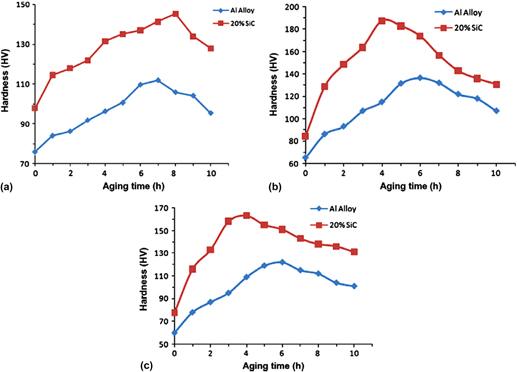Crossref Citations
This article has been cited by the following publications. This list is generated based on data provided by
Crossref.
Rahman, Khandaker Mezanur
Vorontsov, Vassili A.
Flitcroft, Stephen. M.
and
Dye, David
2017.
A High Strength Ti–SiC Metal Matrix Composite .
Advanced Engineering Materials,
Vol. 19,
Issue. 7,
Mohanavel, V.
Rajan, K.
Kumar, S. Suresh
and
Ganeshan, P.
2017.
Manufacturing and mechanical characterization of dual particle reinforced hybrid composites.
p.
1.
Prashantha Kumar, H.G.
Anthony Xavior, M.
Joel, Ashwath.P.
and
Kaustav Chakraborty, J.
2018.
Effect of flake reinforcement on mechanical properties of AA 6061 nano composite with secondary nano platelet-Graphene processed through powder metallurgy.
Materials Today: Proceedings,
Vol. 5,
Issue. 2,
p.
6626.
Nakajima, Yasutaka
Hayashi, Shuichiro
Katayama, Akito
Nedyalkov, Nikolay
and
Terakawa, Mitsuhiro
2018.
Femtosecond Laser-Based Modification of PDMS to Electrically Conductive Silicon Carbide.
Nanomaterials,
Vol. 8,
Issue. 7,
p.
558.
Ashwath, P.
and
Anthony Xavior, M.
2018.
Effect of microwave heat treating processing on frictional behaviour of aluminium alloy 2900 composites.
Tribology - Materials, Surfaces & Interfaces,
Vol. 12,
Issue. 2,
p.
85.
Hima Gireesh, Ch
Durga Prasad, K.
and
Ramji, Koona
2018.
Experimental Investigation on Mechanical Properties of an Al6061 Hybrid Metal Matrix Composite.
Journal of Composites Science,
Vol. 2,
Issue. 3,
p.
49.
Arunkumar, D T
Raghavendra Rao, P S
Hussain, Mohammed Shadab
and
Naga Sai Balaji, P R
2018.
Wear Behaviour and Microstructure Analysis of Al-7075 alloy reinforced with Mica and Kaolinite.
IOP Conference Series: Materials Science and Engineering,
Vol. 376,
Issue. ,
p.
012067.
Sharma, Apurbba Kumar
and
Mishra, Radha Raman
2018.
Role of particle size in microwave processing of metallic material systems.
Materials Science and Technology,
Vol. 34,
Issue. 2,
p.
123.
Ashwath, P.
and
Xavior, M. Anthony
2018.
Effect of ceramic reinforcements on microwave sintered metal matrix composites.
Materials and Manufacturing Processes,
Vol. 33,
Issue. 1,
p.
7.
Meignanamoorthy, M.
Ravichandran, M.
Elmariung, A.
and
Dinesh Kumar, S.
2019.
Advances in Manufacturing Technology.
p.
607.
Gómez-Esparza, C. D.
Duarte-Moller, A.
López-Díaz de León, C.
Martínez-Sánchez, R.
Hernández-Paz, J.F.
and
Rodríguez-González, C.A.
2019.
Influence of ZnO nanoparticles on the microstructure of a CoCrFeMoNi matrix via powder metallurgy.
International Journal of Minerals, Metallurgy and Materials,
Vol. 26,
Issue. 11,
p.
1467.
Çelik, Yahya Hişman
and
Kilickap, Erol
2019.
Hardness and Wear Behaviours of Al Matrix Composites and Hybrid Composites Reinforced with B4C and SiC.
Powder Metallurgy and Metal Ceramics,
Vol. 57,
Issue. 9-10,
p.
613.
IRFAN, Osama
and
ALABOODİ, Abdualaziz
2020.
On the Compression Properties and Erosion-Corrosion Behaviour of Al 6061/15%Sicp Composite.
Politeknik Dergisi,
Vol. 23,
Issue. 2,
p.
415.
Shaikh, Mohd Bilal Naim
Aziz, Tariq
Arif, Sajjad
Ansari, Akhter H.
Karagiannidis, Panagiotis G.
and
Uddin, Mohammad
2020.
Effect of sintering techniques on microstructural, mechanical and tribological properties of Al-SiC composites.
Surfaces and Interfaces,
Vol. 20,
Issue. ,
p.
100598.
Wan, Qiong
Li, Fuguo
Wang, Wenjing
Hou, Junhua
Cui, Wanyue
and
Li, Yongsheng
2021.
Microstructure and properties of in situ Ti–Al intermetallic compound-reinforced Al matrix composites with dispersive distribution of core–shell-like structure.
Composites and Advanced Materials,
Vol. 30,
Issue. ,
Löwer, Erik
Pfaff, Florian
Leißner, Thomas
and
Peuker, Urs A.
2021.
Neighborhood Relationships of Widely Distributed and Irregularly Shaped Particles in Partially Dewatered Filter Cakes.
Transport in Porous Media,
Vol. 138,
Issue. 1,
p.
201.
Çelebi, Müslim
Güler, Onur
Çanakçı, Aykut
and
Çuvalcı, Hamdullah
2021.
The effect of nanoparticle content on the microstructure and mechanical properties of ZA27-Al2O3-Gr hybrid nanocomposites produced by powder metallurgy.
Journal of Composite Materials,
Vol. 55,
Issue. 24,
p.
3395.
Mussatto, Andre
Ahad, Inam UI
Mousavian, Reza Taherzadeh
Delaure, Yan
and
Brabazon, Dermot
2021.
Advanced production routes for metal matrix composites.
Engineering Reports,
Vol. 3,
Issue. 5,
Yang, Zhiyu
Fan, Jianzhong
Liu, Yanqiang
Nie, Junhui
Yang, Ziyue
and
Kang, Yonglin
2021.
Strengthening and Weakening Effects of Particles on Strength and Ductility of SiC Particle Reinforced Al-Cu-Mg Alloys Matrix Composites.
Materials,
Vol. 14,
Issue. 5,
p.
1219.
Kumar, Neeraj
and
Manoj, M. K.
2021.
Influence of B4C on Dry Sliding Wear Behavior of B4C/Al–Mg–Si Composites Synthesized via Powder Metallurgy Route.
Metals and Materials International,
Vol. 27,
Issue. 10,
p.
4120.




